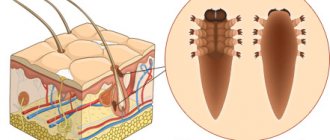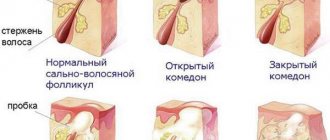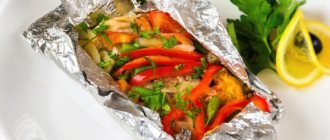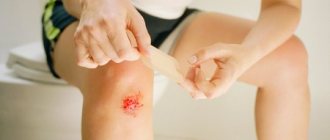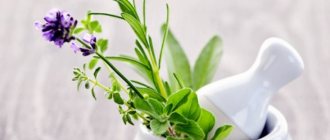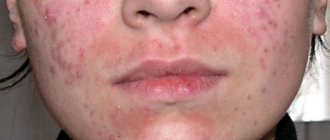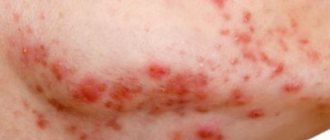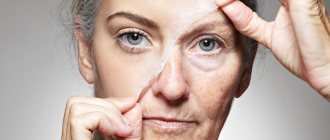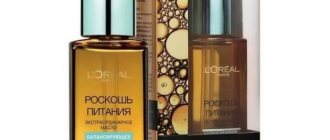Acne, especially in adults, is often called hormonal acne. Hormones, along with many other factors including bacteria, skin cell abnormalities, genetics, and stress levels, play a role in its progression (1, 2, 3, 4).
Although this condition is usually treated with medications, lifestyle factors, including diet, can play an important role in controlling and reducing symptoms.
This article looks at the best diet for acne, including foods to eat and avoid, and supplements that may help.
Causes of acne
To get rid of acne on the face, you should determine the reason that triggered its appearance.
These reasons include:
- Hormonal imbalance in the body. Often such a failure occurs in adolescents, pregnant women, and people suffering from pathologies in the genitourinary or endocrine system.
- Deficiency of minerals and vitamins in the body.
- Loss of immunity, physical and mental overload, insufficient time for sleep.
- Hypothermia of the body.
- Malfunctions of the digestive organs.
- Poor facial skin hygiene.
- Allergic reactions of the body.
It should be noted that the occurrence of acne can be simultaneously influenced by several factors. This is exactly the situation observed in most cases.
Cleansing the body
This issue deserves special attention. Before we talk about products that help improve the condition of the skin, you need to understand the process of cleansing the body. The first stage is the normalization of intestinal functions. Any malfunctions in the intestines lead to the development of pathogenic microflora. This is a negative factor that contributes to the appearance of acne. Everything is quite simple: if the intestines cannot cope with the removal of harmful substances from the body, the skin begins to perform this function. As a result, harmful waste products begin to come out through the pores, clogging them. Acne and pimples appear on the skin. To restore proper functioning of the gastrointestinal tract, you need food rich in fiber. Fiber binds free radicals and toxins, as well as other harmful substances, and removes them from the body. In addition, they create a favorable environment for beneficial microelements.
Acne Diet Guidelines
The peculiarity of a diet designed to solve the problem of acne and pimples is that specialists can only provide general recommendations.
As mentioned above, you need to start with normalizing the functioning of the digestive system. To do this, you should completely solve the problem of dysbiosis, change your menu, enriching it with products rich in dietary fiber and pectin. This allows you to create favorable conditions for the reproduction of normal intestinal microflora.
Sources of dietary fiber include cereals (buckwheat and pearl barley), pasta based on whole grain flour, brown rice, bran, broccoli, cabbage, spinach, dill and other products.
To help your skin get rid of acne, you should eat foods that contain a sufficient amount of zinc. Therefore, the menu must include liver, low-fat beef, wheat bran, and seafood. Zinc helps regulate the functioning of the sebaceous glands.
We also must not forget about vitamins, without which the skin cannot look attractive. To speed up tissue regeneration, relieve inflammation from the skin, reduce flaking, and get rid of local redness, you should include in your diet foods that are rich in vitamin A. Therefore, foods such as fish oil, corn, milk and food products should always be on the table. its basis, carrots, apricots.
It is impossible to imagine a diet to combat acne that would be lacking in B vitamins. They help skin cells renew themselves faster, metabolism accelerates in the deep and superficial layers of the dermis, which promotes high-quality regeneration of the skin. To do this, the menu needs to include animal liver and kidneys, buckwheat, wheat groats, cabbage and cheeses.
It has a lifting effect, stimulates metabolic processes, accelerates the regeneration of the skin, normalizes the water balance of the skin, relieves it of flaking, dryness and pigmented rashes. Vitamin E is a real elixir for the skin. You can deliver it to the dermis from the inside if you eat vegetable oils: soybean, cottonseed, sunflower. There is a lot of vitamin E in sprouted wheat, green peas, boiled eggs, and parsley.
Fish is a storehouse of vitamins and beneficial microelements that problematic skin needs. Fish contains a lot of Omega-3 fatty acids, which act as strong antioxidants; they can eliminate even chronic acne, have a powerful anti-inflammatory effect, and increase skin tone and elasticity.
TOP 3 facts you need to know about diets for acne
- To get rid of acne, you will have to limit yourself in diet, give up your favorite “store-bought pranks”: sweets, smoked foods, fatty foods, flour foods.
- You should not immediately go on a “mono-diet” or severely limit yourself in your lifestyle and nutrition. For the body, this will be stress, to which it will react with a headache and a feeling of fatigue.
- Dermatologists and cosmetologists consider nutrition as one of the components of the treatment of pimples and acne. If you want to get rid of acne as quickly as possible, it is better to consult a specialist, find out the cause, prescribe treatment (antibiotics, hormones, ointments) and stick to it.
Vitamins for beautiful skin
In order for the skin to remain beautiful and acne-free, it should receive the following set of vitamins:
- Vitamin A.
It allows you to retain moisture in the dermis, promotes the normal maintenance of collagen and elastin in its layers, and can also combat the excessive work of the sebaceous glands. Thus, the skin remains elastic for a long time.
- Vitamin E.
This vitamin is a powerful antioxidant that neutralizes the effects of toxins and other harmful substances. If the body receives it in sufficient quantities, then black spots will not form on the skin.
- B vitamins.
Vitamins of this group allow you to deliver other nutrients to the skin and promote their high-quality absorption. However, if there are too many of these vitamins in the body, this will lead to worsening inflammatory processes, which means there will be even more acne.
- Vitamin C. This vitamin is the main fighter against acne. It allows you to destroy toxins and helps reduce inflammation. Moreover, getting through the bloodstream to the pores, ascorbic acid acts as a powerful antiseptic that cleanses the dermis from the inside. Vitamin C also stimulates the immune system, increasing the skin’s ability to resist negative environmental factors.
In addition to vitamins, the skin needs zinc, chromium, selenium, manganese, copper, iron and polyunsaturated fatty acids.
What will you have to limit yourself to?
The first and most important thing is sweets. It is unlikely that you will be able to give it up completely (and it is not worth it, because without sweets we become more irritable), but you will need to greatly limit yourself in this.
Various sweets, especially in large quantities, clog the esophagus, which results in indigestion, and you can see the result on your face. So for the first time, try to give up chocolates and other sweets. Remember also about carbonated drinks, because they also contain a lot of sugar.
- Second, avoid fried foods. With significant consumption, the skin becomes oilier. And this provides conditions for the development of pathogenic bacteria (let’s not go too deep into biology, just know that fatty foods are harmful).
- And third - bad habits. Cigarettes damage the skin on your face. Alcohol causes acne even on healthy skin. That is, quit cigarettes and alcohol (especially if you are a teenager). The harm of drugs is worth mentioning separately. In addition to the fact that psychotropic drugs negatively affect the nervous system of the body, they affect a person’s appearance.
Here's a short list of things to avoid:
- products containing carbohydrates (sweets, flour, instant coffee);
- fast food, dishes rich in carcinogens that disrupt digestion;
- foods high in fat (butter);
- spicy, salty;
- carbonated drinks that contain large amounts of sugar;
- alcohol, nicotine.
Sample menu for a week of anti-acne diet
In accordance with the recommendations for proper nutrition, we offer you a diet menu for acne by day for the week. You will see the first results in 4-5 days. You can follow this diet for as long as you want - its duration is not limited. This menu is only approximate; you can form your diet based on this menu and in accordance with the rules of healthy eating for clear skin listed above.
Acne menu for 7 days:
| Day | Breakfast | Dinner | Afternoon snack | Dinner |
| 1 | Oatmeal with bran, whole grain bread, green tea | Vegetable soup, beef and green bean stew, yogurt and sweet corn salad | Prunes – 5 pieces | Boiled beans, stewed carrots |
| 2 | Casserole with cottage cheese and carrots, nuts and green tea | Fish soup, buckwheat with steamed meatballs, seafood salad and lemon juice | Kefir and pear | Pea porridge, lettuce leaves, fruit drink with cranberries |
| 3 | Omelette with egg and cottage cheese, toast, green tea | Mushroom soup, boiled turkey fillet, stew with vegetables, oven-baked chicken fillet in foil | Yogurt | Mashed potatoes, salad with fresh tomatoes, apple compote |
| 4 | Oatmeal with yogurt, toast with butter, green tea | Chicken noodle soup, stewed chicken breast with tomatoes and peppers | Berries | Cottage cheese with raisins and whole grain bread |
| 5 | Omelette with buckwheat and egg, milk | Cabbage soup, baked fish, vegetable salad | Dried fruits | Carrot pancakes, green tea |
| 6 | Baked vegetables, cottage cheese, toast and cocoa | Borsch with vegetables, rice with seafood, salad with tomatoes | Milk and cracker | 2 egg omelette, fruit drink |
| 7 | Omelet with cheese and cottage cheese, chicory | Chicken soup with breadcrumbs, boiled mushrooms, lettuce and feta cheese | Grated carrots with lemon juice dressing | Minced chicken cutlet, stewed sweet peppers and rosehip infusion |
It is best to use fruits, nuts and vegetable salads as snacks. It is recommended to drink at least 2 liters of mineral water per day.
Recipes for a “party and healthy” dinner
We bring to your attention some dishes that can benefit the body and surprise guests with their simplicity and amazing taste:
- Spicy steamed fish with vegetables. Cut the fish, make a vegetable bed, sprinkle with lemon juice and olive oil, then place in a steamer for 20 minutes.
- Tender chicken fillet in a vegetable “coat”. Cut the chicken, salt and pepper, cover each piece with your favorite vegetables, pour in a mixture of cream and eggs, wrap in foil and place in the oven for 30–40 minutes.
- Salad "Vitaminka". Chop fresh vegetables coarsely, add salt, add spinach and flax seeds, sprinkle with olive oil.
- Veal cabbage rolls in spinach leaves. Pass the meat through a meat grinder, add rice, onions and carrots, wrap the resulting mass in a spinach leaf, place in a mold, sprinkle the cabbage rolls with soy sauce and bake for 40–50 minutes until cooked.
To be beautiful on the outside and healthy on the inside, you need to perceive the “correct” diet not as a temporary phenomenon until the symptoms of the disease disappear, but as a way of life, healthy and fulfilling. Of course, each of us has the right to decide our own destiny, but those who want to get maximum pleasure from life, to be cheerful, slim, athletic, need to listen to the recommendations of doctors. Be an example for others, and then the whole world will become more beautiful!
Permitted and prohibited products
There are a wide variety of foods that people suffering from acne can eat. When creating a menu, it is important to focus on your health status and take into account possible allergic reactions.
The list of permitted products includes:
- Fresh vegetables and fruits. These products are a source of fiber, so they help normalize intestinal function. At least once a month you should spend fasting days on fruits or vegetables.
- At least 3 times a week, the menu should include cereal-based dishes. It is best to give preference to buckwheat, oatmeal, and brown rice.
- You can eat bread, but in small quantities. For this purpose, you should choose rye bread or wholemeal bread.
- You should definitely drink fermented milk drinks. Cottage cheese should have low fat content, the same goes for kefir.
- Allowed meat is lean: beef, turkey, chicken. Meat dishes should be on the menu at least 2 times a week. They are cooked either grilled or steamed.
- Olive oil is a source of beneficial substances that the skin needs. Therefore, it should be used for salad dressing.
- Be sure to drink at least 8 glasses of water a day; you can also drink mineral water, but without gases. This promotes rapid regeneration of the skin and allows you to rejuvenate the body.
- You need to drink green tea, which has an anti-inflammatory effect due to the presence of catechins in it.
- Nuts should be used as a source of selenium. In addition, they are rich in Omega-3 fatty acids. You need to choose nuts that have not had any spices added to them.
Foods that contribute to acne:
- Alcoholic drinks and tobacco.
- Fried foods.
- Preserved products.
- Mayonnaise and ketchup.
- Spicy seasonings.
- Fatty meat: pork, lamb, etc.
- All confectionery products.
- Strong tea and coffee.
- Foods are sources of cholesterol.
- Peanut. Promotes a surge of the androgen hormone. It activates the sebaceous glands responsible for the production of sebum.
- Milk. Diet therapy in the fight against acne completely excludes this product from the diet. It is a stimulator of the sebaceous glands.
- Salt. It flushes fluid from the body and disrupts the water balance of skin cells. Its use should be reduced to a minimum, if it is impossible to refuse completely. In some dishes, such as salads, salt can be easily replaced with lemon juice, without compromising their taste.
- Products containing iodine. It is believed that high levels of iodine in foods aggravate acne and cause pimples.
Specific Ingredients
There are a number of products that help cleanse the body and reduce the amount of sebum secreted.
These include:
- Ginger: Helps strengthen the immune system and cleanse the blood.
- Parsley: It is recommended to consume a decoction of this herb daily. This helps cleanse the blood.
- Lemon: normalizes metabolism and helps improve immunity.
- Garlic: is a natural antibiotic. This product helps to synthesize antibodies that resist negative influences. Garlic also stimulates blood flow and destroys bacteria.
Pros and cons of the acne diet
Pros of the diet:
- The menu is balanced and consists of many products.
- The diet is easy to tolerate and can be followed on an ongoing basis.
- Metabolism returns to normal, the skin rejuvenates and becomes cleaner.
- If you exercise at the same time, you will be able to lose weight.
Disadvantages of the diet:
- The menu includes eating seafood, which is quite expensive.
- There are no simple carbohydrates on the menu, so not everyone will be able to maintain such a diet.
Cosmetologist's advice
In addition to diet, it is necessary to perform cosmetic procedures aimed at cleansing the skin. This will help you get rid of acne faster. Procedures should not be one-time, they should be carried out regularly. Skin care will normalize the functioning of the skin glands and eliminate the rash. The dermis should be cleansed every day, no matter how intense the acne. For this purpose, you need to use antibacterial agents. Do not apply ointments and creams that have a greasy base to the skin, as this contributes to blockage of the sebaceous glands.
Regardless of skin type, it needs care, which consists of the following procedures: cleansing, toning, nutrition and moisturizing.
Home remedies are used to cleanse the dermis; you can also undergo cleaning using devices in a beauty salon.
Cleaning can be superficial and deep, physical, chemical and mechanical. The most gentle is superficial cleaning, which affects the stratum corneum of the skin. Its scales exfoliate, skin elasticity increases, and its nutrition is enhanced. This cleaning is done at home using scrubs, tonics, and masks. It is indicated for oily skin and acne.
Deep cleansing allows you to use the entire epidermis, right down to its deep layers. For severe skin changes: in the presence of wrinkles, scars and stretch marks on the skin, peeling with fruit acids is used. This procedure is aggressive and injures the skin. Deep readings also include ultrasonic peeling, skin treatment with galvanic currents and alkaline solutions. Such procedures are carried out only in a cosmetologist’s office. During the procedure, the pores open and comedones come out. A vacuum is also used for this purpose. It is possible to use other procedures aimed at cleansing the skin, but they should be selected individually, together with a cosmetologist.
If the disease is severe, then it is impossible to get rid of acne on your own; you should contact a specialist. In this case, not only local treatment will be required, but also taking antibacterial drugs, as well as retinoids (Isotretinoin, Roaccutane). The latest drugs help relieve inflammation and have a sebostatic effect. However, when taking retinoids, the stratum corneum becomes thinner, its permeability increases, and the skin becomes dry and prone to irritation. This may cause the rash to worsen. Therefore, the dermis needs to be moisturized, which helps relieve inflammation and allows it to recover as soon as possible.
What is acne?
Acne is a skin disease characterized by acne, purulent pimples, inflammation, redness of the skin, and sometimes deep lesions.
They are classified according to severity (5):
- Mild acne : non-inflammatory lesions, few inflammatory lesions, or both.
- Moderate acne : More inflammatory lesions, occasional nodules - severe, painful lesions or both, and mild scarring.
- Severe acne : extensive inflammatory lesions, nodules, or both, and scarring, ongoing moderate acne that does not improve with treatment after 6 months, or any acne that causes severe psychological distress.
Acne usually appears in areas of your body that have sebaceous glands, which are tiny oil-producing glands that are influenced by hormones. They are present on your face, back, chest, neck and shoulders (4).
Severe cases of acne can lead to disfigurement, permanent scarring of the skin, and severe emotional disturbances that can lead to depression and withdrawal from social situations (4).
Although this condition is most common during adolescence, it can continue into adulthood and some may even experience it throughout their lives (6).
What is the cause of hormonal acne?
The factors that lead to acne are complex and multifactorial.
Genetic predisposition, hormonal fluctuations that lead to excess sebum or oil production from the sebaceous glands, inflammation, follicular hyperkeratinization and bacterial colonization can trigger acne.
Follicular hyperkeratinization - or abnormal skin cell turnover of the sebaceous glands and the top of the hair follicles near the opening - is considered the main cause.
These skin cells clog the pores and form what is medically called a microcomedone (7, 8).
Propionibacterium acnes is a bacteria that usually grows on your skin.
In people with acne, they grow abnormally, leading to inflammation, skin damage, follicular hyperkeratinization, and changes in sebum (9).
Hormones also play an important role in the development of acne, which is why it is often called “hormonal acne.” This condition usually occurs during adolescence due to increased levels of sex hormones during puberty, regardless of gender.
Women also experience acne later in life due to hormonal fluctuations during pregnancy, perimenopause, and when using hormonal contraceptives (9).
Inflammation and diet are also thought to play a role, although some argue that diet is less significant. However, there is good evidence that some dietary changes make a significant contribution to the treatment of acne (6).
Acne can also be caused by certain medications and occupational chemical exposures. However, these types of acne are different from regular acne (10).
Summary:
Hormonal acne is a skin condition caused by many factors, including hormonal changes, bacteria, inflammation, hyperkeratinization and diet.

